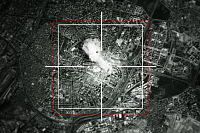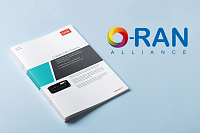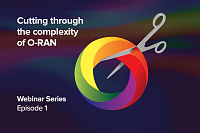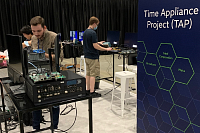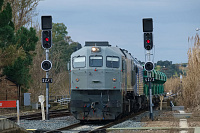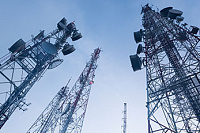Extrapolation of ITU-T recommendations on sync to the output of the end user application can be challenging. ITU-T recommendations are intended to deal only with the packet network portion of a communication system. However, being always pragmatic, the ITU-T authors recognise that the packet network ultimately serves an end application. Because of the significance of mobile communication, the ITU-T recommendations include references to and are consistent with 3GPP standards.

Fig.1 - Deployment case 1
This deployment case example is widely used. ITU-T recommendations define performance requirements to reference point C in support of various end user applications which each have their specific synchronization requirements at reference point E.
ITU-T G8271.1
An example of this is in the ITU-T G8271.1 recommendation on Network limits for time synchronization. The recommendation itself lays down performance limits to the edge of the packet network. This includes limits on the maximum absolute low pass filtered TE network limit, max|TE L| as well as the dynamic low frequency TE, dTE L(t) and dynamic high frequency TE, dTE H(t). In an appendix to this document, the recommendation gives example design options and error budgets for a representative network with an end application. In this case, the end application has a total maximum absolute TE limit of ±1.5µs. While the recommendation never specifically states that this refers to 5G TDD, the ±1.5µs limit conveniently aligns with the 3GPP requirement that adjacent base stations be synchronized to within 3µs.
ITU-T recommendations are often used to define the performance requirements of the overall core network in mobile communications as well as the individual components making up the network. Components often have elaborate specifications and performance requirements defined in the ITU-T recommendations to, among other things, assure interoperability in a network. The packet network itself has relatively few performance limits to meet as listed earlier ( max|TE L|, dTE L(t), dTE H(t)).
Beyond the edge of the packet network (reference point C), one can refer to the 3GPP standards for performance limits. However, in the case of synchronization, the only synchronization accuracy metric is that the overlapping cell transmissions on the same frequency be synchronized to within 3µs (macro-cells with cell radius less than 3km). No distinction is made about constant or dynamic behaviour of the synchronization. This 3µs is allocated to intercell synchronization as part of the overall sync error budget in 3GPP to assure that there is no interference between transmitters.
One could simply make spot measurements to verify that the intercell synchronization is within 3µs and use this as an indicator of the overall health of the network sync. However, the same logic applies to fuel gauges in cars. So long as all is well, the fuel gauge could be replaced by simple ‘out-of-fuel’ light, and all will be well until it illuminates. One of the values that a good test solution can bring to the operators of a mobile network is the ability to not just verify that the network is operating within hard performance limits but also to give insight into just how much margin there is before a problem might occur. Regular monitoring also allows the operator to spot drifting behaviour and address the underlying cause before it affects their customers.
In my next blog, I will look at how measuring sync performance over the air gives a full picture of how the network synchronization is behaving and more importantly point at potential problems.
Bryan Hovey
Product Manager
Related product: Sentinel
Related blogs: Synchronization is not a single numberand 5G OTA Wander Mask: Fact or Myth?
Related literature: Timing and Synchronization Library




